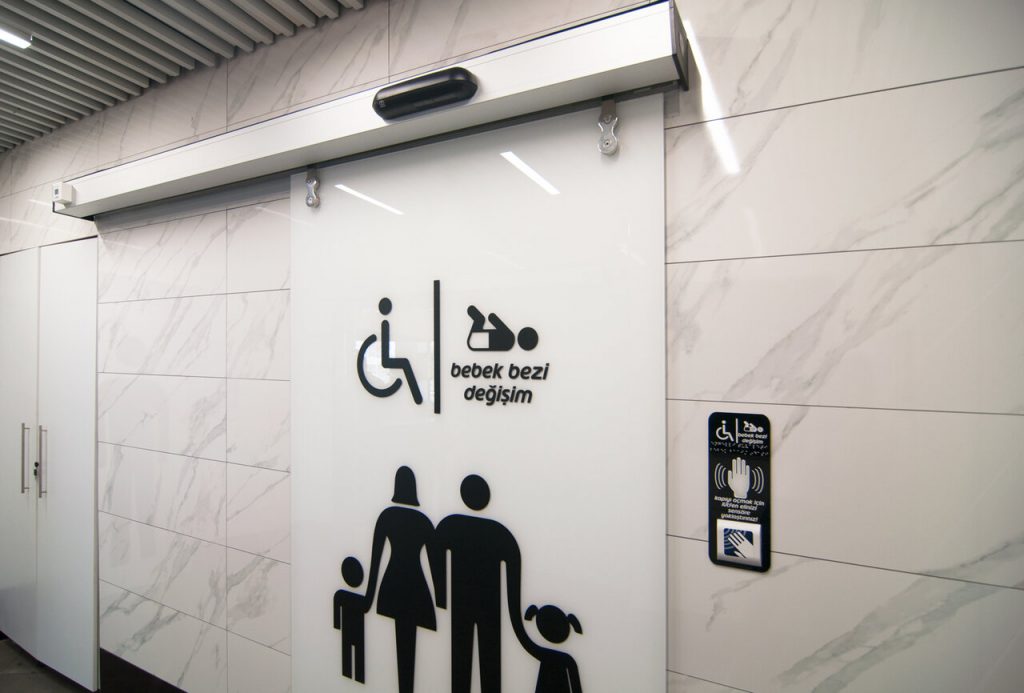
Technical Insights and Regional Adaptations
Revolving doors, commonly used in commercial and public buildings worldwide, have distinct applications and adaptations in the Middle East. This article explores the technical aspects of revolving doors, their regional adaptations in the Middle Eastern context, and considerations for energy efficiency and aesthetic integration.
1. Introduction
Revolving doors serve as a practical solution for managing pedestrian traffic, enhancing energy efficiency, and providing a barrier against the elements. In the Middle East, their application is influenced by the region’s unique climatic and architectural needs. This paper examines the technical components of revolving doors and their specific adaptations in the Middle Eastern region.
2. Technical Components
2.1 Door Wings
Revolving doors typically consist of two, three, or four wings that rotate around a central axis. The wings are often made of materials such as glass, metal, or a combination of both. In the Middle East, glass doors are frequently equipped with solar coatings to reduce heat gain and glare.
2.2 Mechanical System
The core mechanical system of a revolving door includes a central shaft that supports the door wings. This shaft is driven by a motor or manual mechanism. Electric motors are commonly used to provide smooth and controlled movement, with speed regulators ensuring optimal operation.
2.3 Bearings and Rollers
Bearings and rollers are crucial for the smooth and silent rotation of the door wings. These components are housed in the central shaft and must be durable enough to withstand high traffic volumes and frequent use.
2.4 Drive Mechanism
Revolving doors in the Middle East are often equipped with electric drive mechanisms, allowing for precise control over the door’s movement. Manual revolving doors are also used but are less common in high-traffic areas. Electric systems can include variable speed drives to adjust the door’s speed based on traffic flow.
2.5 Sensors and Controls
Modern revolving doors are equipped with sensors that detect obstacles and ensure safe operation. These sensors prevent accidents by stopping the door if an obstruction is detected. Control panels allow for adjustments to the door’s speed and operational parameters.
2.6 Handles and Locking Mechanisms
Handles are generally located on the exterior of the revolving door, facilitating user operation. Some models feature integrated locking mechanisms for added security.
3. Regional Adaptations
3.1 Material Selection
In the Middle East, material selection for revolving doors is influenced by the region’s hot climate. Glass doors are often treated with special coatings to mitigate heat gain and enhance energy efficiency. Metal doors are coated with anti-corrosive materials to prevent degradation from the harsh environmental conditions.
3.2 Energy Efficiency
Energy efficiency is a significant consideration due to the region’s extreme temperatures. Revolving doors are designed to minimize the exchange of indoor and outdoor air, thereby reducing the load on HVAC systems. Some doors are equipped with thermal breaks and high-performance seals to improve insulation.
3.3 Design and Aesthetics
The design of revolving doors in the Middle East often reflects the region’s architectural style, which can range from traditional to contemporary. Custom designs may incorporate regional motifs and colors to blend seamlessly with the building’s exterior.
3.4 High Traffic Capacity
High-traffic environments, such as shopping malls and hotels, require revolving doors that can handle substantial foot traffic. Doors are engineered for durability and longevity, often featuring reinforced components and advanced mechanical systems to ensure reliability.
4. Maintenance and Safety
4.1 Maintenance
Regular maintenance is essential for the smooth operation of revolving doors. This includes cleaning and lubricating bearings, checking the functionality of sensors, and ensuring that the motor and drive mechanisms are in good working condition.
4.2 Safety
Safety features are critical in preventing accidents and ensuring the door’s reliable operation. Emergency override functions and manual operation capabilities are integrated to handle power outages and other emergencies.
5. Conclusion
Revolving doors in the Middle East are tailored to meet the specific demands of the region’s climate, architectural aesthetics, and high traffic environments. By integrating advanced materials and technologies, these doors provide efficient and safe solutions for modern commercial and public spaces.
References
- [Insert relevant references and sources here]
This sample article provides an overview of the technical and regional considerations for revolving doors in the Middle East. If you need further details or a more specific focus, let me know!






